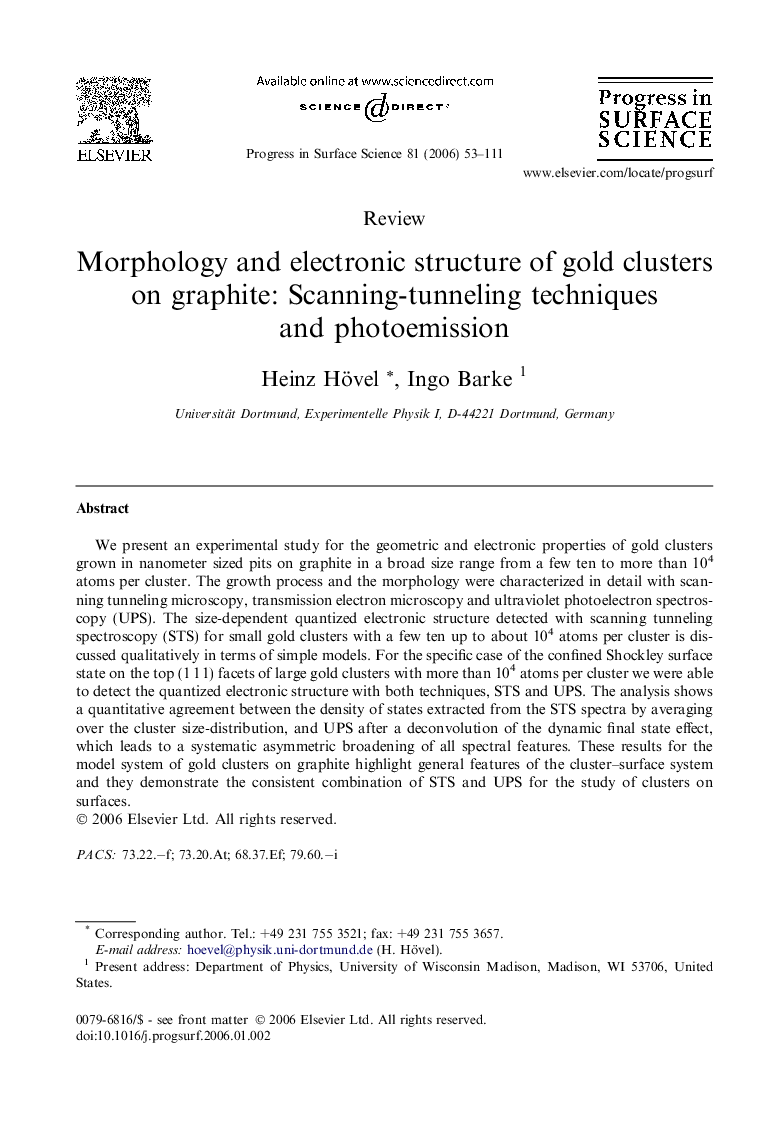| Article ID | Journal | Published Year | Pages | File Type |
|---|---|---|---|---|
| 5420117 | Progress in Surface Science | 2006 | 59 Pages |
Abstract
We present an experimental study for the geometric and electronic properties of gold clusters grown in nanometer sized pits on graphite in a broad size range from a few ten to more than 104 atoms per cluster. The growth process and the morphology were characterized in detail with scanning tunneling microscopy, transmission electron microscopy and ultraviolet photoelectron spectroscopy (UPS). The size-dependent quantized electronic structure detected with scanning tunneling spectroscopy (STS) for small gold clusters with a few ten up to about 104 atoms per cluster is discussed qualitatively in terms of simple models. For the specific case of the confined Shockley surface state on the top (1Â 1Â 1) facets of large gold clusters with more than 104 atoms per cluster we were able to detect the quantized electronic structure with both techniques, STS and UPS. The analysis shows a quantitative agreement between the density of states extracted from the STS spectra by averaging over the cluster size-distribution, and UPS after a deconvolution of the dynamic final state effect, which leads to a systematic asymmetric broadening of all spectral features. These results for the model system of gold clusters on graphite highlight general features of the cluster-surface system and they demonstrate the consistent combination of STS and UPS for the study of clusters on surfaces.
Keywords
Related Topics
Physical Sciences and Engineering
Chemistry
Physical and Theoretical Chemistry
Authors
Heinz Hövel, Ingo Barke,
